Airfix


BN islander / defender model in 1/72 scale
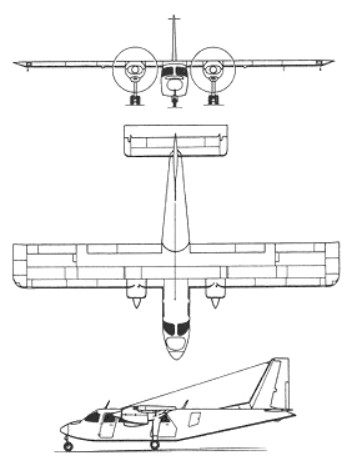
The Britten Norman Islander BN-2 was designed as a light utility transport for 9 passengers and a pilot. It was capable to fly from tiny airfields. It got piston engines and first flight was June 1965. The Defender is the militarised version and has four under wing hard points for pylons for light armament like rocket pods or fuel tanks for extra range.
A turbine engined version was also developed
with Lycoming LTP-101 in revised nacelles and a big air scoop on top of
nacelle-wing fairing. First flight in 1977. The –T version got Allison 250
engines and later B17F engines. Some planes have a revised longer pointy nose
profile.
Initial the BN-2 aircraft
were manufactured at Britten-Norman's factory in Bembridge, Isle of Wight, UK.
Later Islanders and Trislander aircraft were built in Romania, then shipped to
Avions Fairey in Belgium for fitting before being flown to the UK for flight
certification. Since end 2023 low rate production has returned to the U.K at
the BN facility at the Isle of Wight. The Islander has been in production for
over 55 years with over 1,250 planes built.
Different wings were
produced over the years. The first wing had a 49 ft span (14,95 m) and
“triangular” wing tips and used such as on BN-2A-1 and BN-2A-2.
For extra fuel capacity, the 49 ft wing was extended 4 ft to 53 ft (16,15 m) with “triangular” wing tips, such as on BN-2A-3, BN-2A-7, BN-2B-21 and BN-2B-27. Later the 49 ft wing got modified “rectangular” curved wing tips for extra area such as on the BN-2B-20 and BN-2B-26 with also inboard leading edge droop between engine nacelle and fuselage. The BN2T had the 49 ft wing without droop and with 2 wing fences. The BN2T-4S the 53 ft wing with “rectangular” wing tips, no inboard droop but 2 wing fences.
Length 10,86 m with standard nose. Later versions length of 12,20 m with extended radar nose.
(Source: personal information exchange with Britten Norman 2024)


In 1972 Airfix released a nice little 1/72 kit of the Islander.

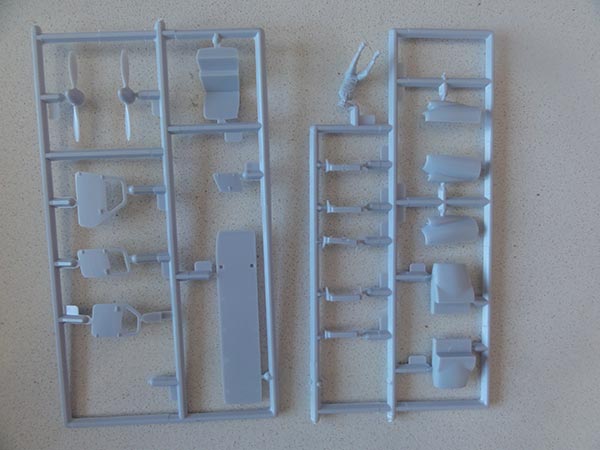
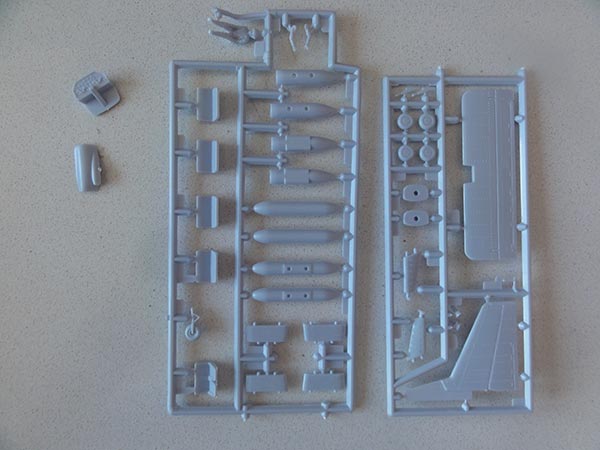
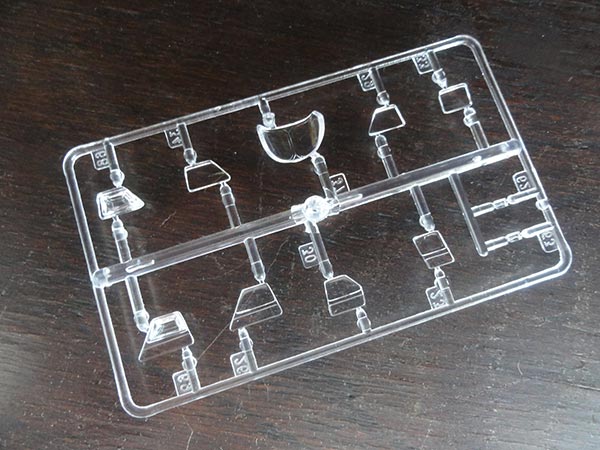
There are about 80 parts in soft plastic and that includes a few Defender fuel drop tanks, special pods and pylons. Raised rivets are all over the parts, sanding these a bit thinner is a good idea.
It has parts for the wing with extra fuel capacity of 53 ft span with “triangular” wing tips.
The kit got several releases, this kit #03067 released in 2006 has good decals for 3 schemes:

-A- Aurigny Air Services, Guernsey, UK, 1971
-B- Philippine Navy, 1978
-C- Milford Sound Flightseeing, Queenstown, New Zealand, 2005
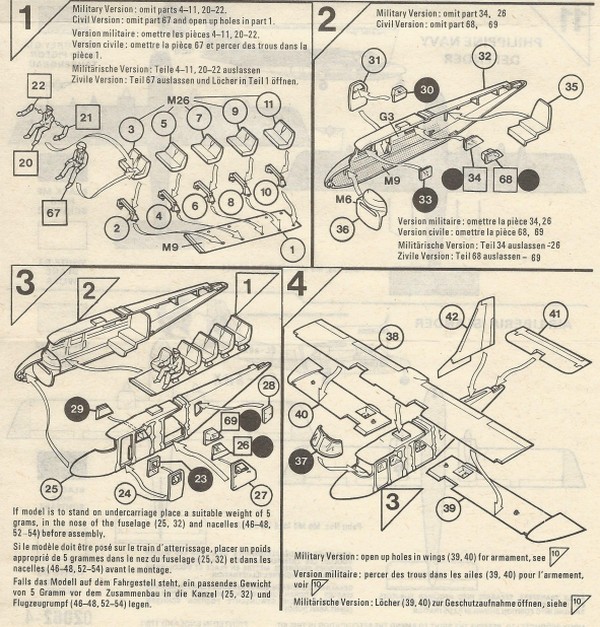


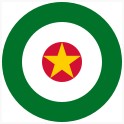
Their first Islander aircraft in 1982 had apparently a "Vietnam" style camouflage but later on got colours of white and blue. This scheme was choosen. These BN-2B had registrations SAF-001 to -004. These have the wing with extra fuel capacity of 53 ft span with “triangular” wing tips so the Airfx wing parts can be used.

The decals were home designed and custom printed. The decals are available in my decals set AIPD-111 BN Islanders in South America. If you are interested in a decals sheet, see the decals page here...
The model has nice cabin windows, so the fuselage halves were airbrushed at the window openings first to avoid to much masking work. Note that the wing parts may be warped/ bended. Use a piece of wood and use clamps to get a straight wing while glueing.
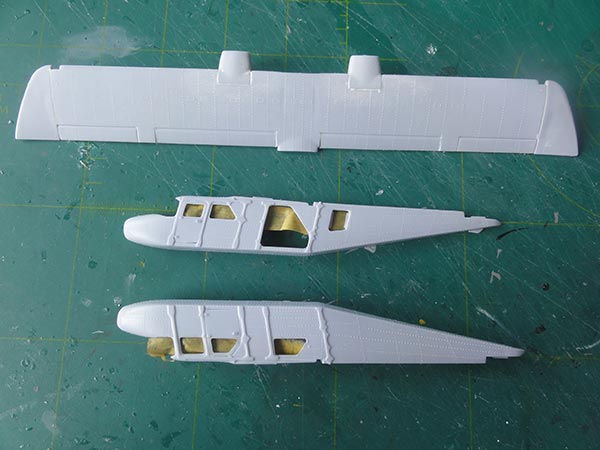
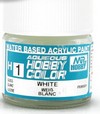
So a matt white base coat was airbrushed with Revell Aqua White 05 acrylic. Than followed Gunze Sangyo H1 acrylic gloss white over the base coat.
The cabin has nice interior parts and got after painting some extra detail from scrap. The cabin door is a separate part and will be set open.
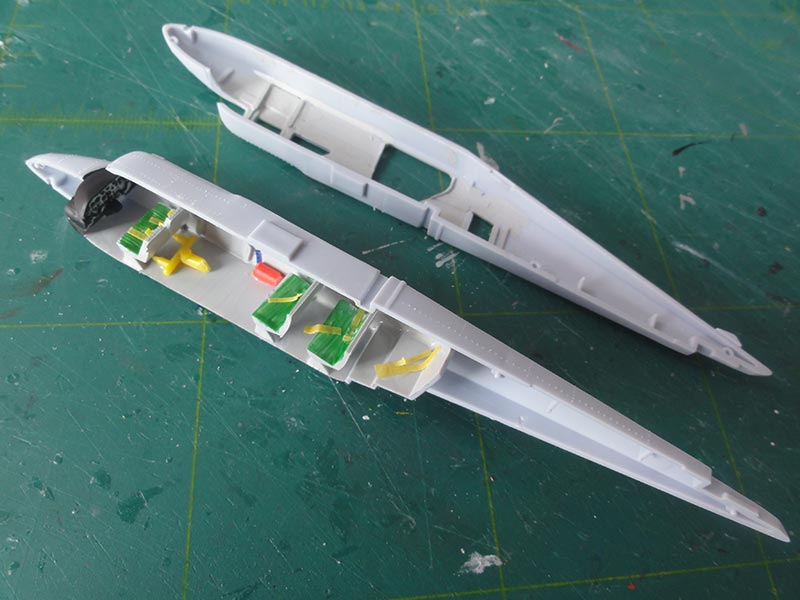
Note that the cabin window outside areas were already airbrushed earlier. The fuselage halves were joined.
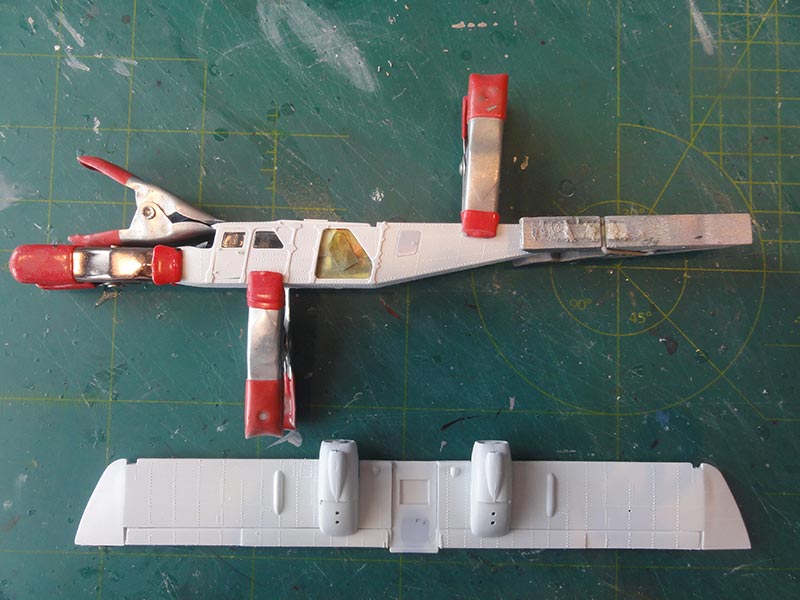
Some putty and sanding was needed. I sanding a bit thinner the raised rivets but did not completely removed these as the real Islander has a lot of those. The wing and fuselage were airbrushed again white, note the masking tape set inside at the window openings.
Masking was done at lower wing nacelle areas and the blue using Gunze Sangyo H25 acrylic was airbrushed. Also, the fuselage areas were masked and airbrushed blue.
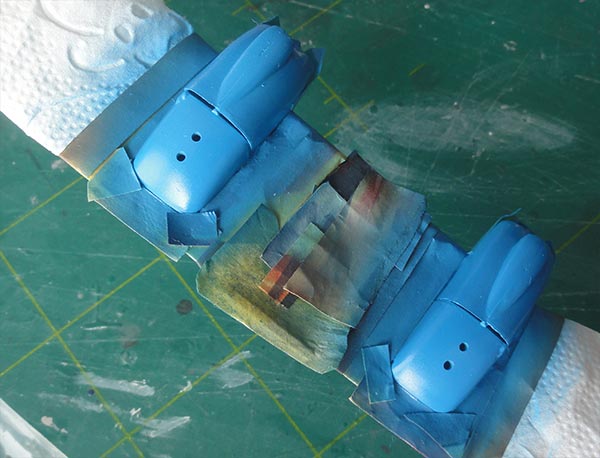
Note that this particular tropical aircraft had no de-icing boots.
After I removed the masking tapes, there were some irregularities. First, corrections of overspray can be done with a cotton swab and some wind screen fluid.

The clear cabin windows were installed, take care here to avoid spills. Kristal Klear can also act as glue. The windows' fit was not bad.

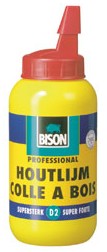
The wing and fuselage were joined and the stabilizer set. Some white glue closed gaps and when dried were painted white with a brush.
This particular aircraft has a search radar whereas the Airfix kit has a pointy nose. With a razor saw a nose section was cut off. In the spares box I found a bit with correct diameter for the search radar dome, I think it was a nose from a large 1/32 Maverick missile. This was cut to size, installed and painted matt black.
NOTE: I forgot to add enough nose weight to avoid tail sitting so a "pogo stick" was set later on below the rear cabin.
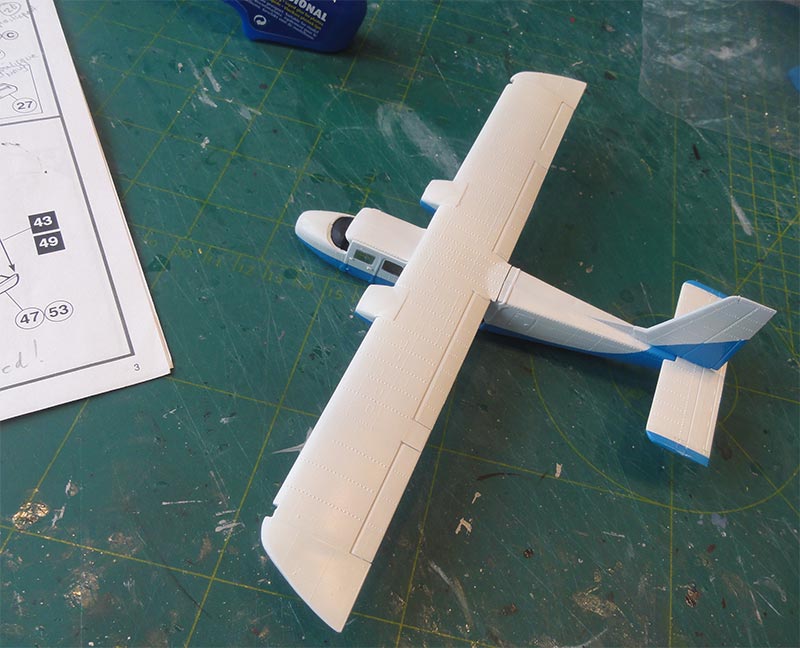
The paint scheme edges themselves if necessary can be made very nicely with small cut sections of the spare blue decal that were previously also airbrushed in the colours.
The landing gear (with faired main gear legs) was installed. The wing lights needed a bit trimming to fit.
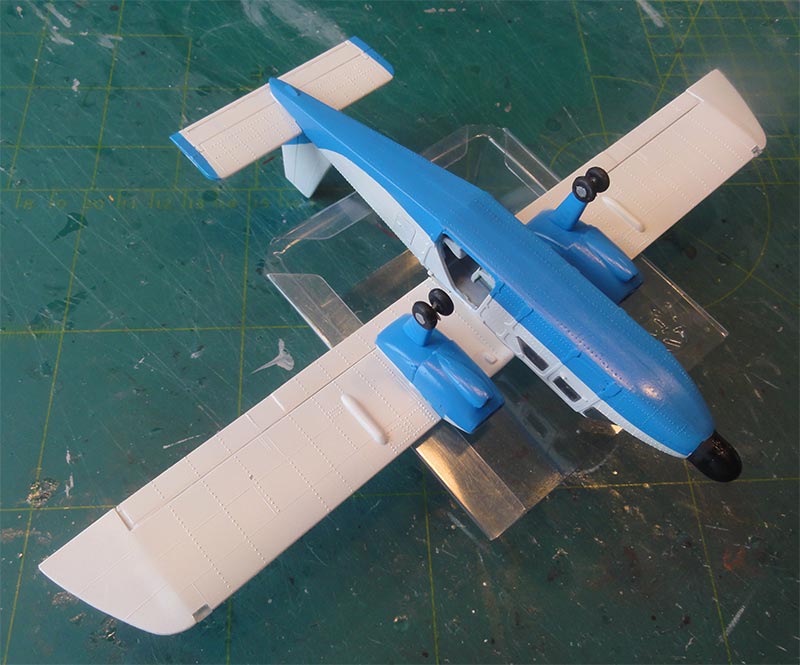
The Surinam markings were just black registrations. I picked the Islander coded SAF-004, BN-2B Defender. The home designed laser printed decals were applied after cutting out each decal.
The propellers were painted black with yellow tips (though that is not entirely clear) and with a silver spinner. Propellers were fixed with white glue at their nacelles.
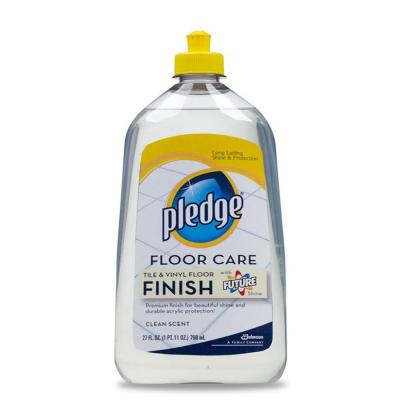
A final airbrushed thin coat of gloss Johnson Future/ Pledge varnish completed this nice model that has a big wing span.
Surinam
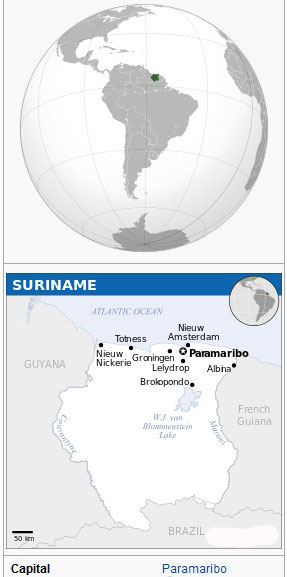

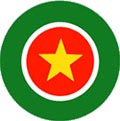

[ area: 163,800 km2 | population: 575,000 | capital: Paramaribo | GDP 6,500 US per capita nominal ]
Suriname is located in the north of South America and is bordered to the east by French Guiana, to the south by Brazil, and to the west by (former British) Guiana. The region was from 1667 a Dutch Colony but Suriname became independent November 25, 1975.
For more information about this Suriname air force, look at the Alouette page here...
In 1982 an Islander was confiscated in Surinam after a jungle drug transport aircraft made an emergency landing. Later came another 3 BN-2B-21 Islanders. The small fleet had large maintenance problems and a shortage of spare parts. They were mostly grounded, some Cessna's were used instead from the local airfield Zorg en Hoop at Paramaribo.

Islander/ BN-2B Defender, Surinam Air Force, SAF-004
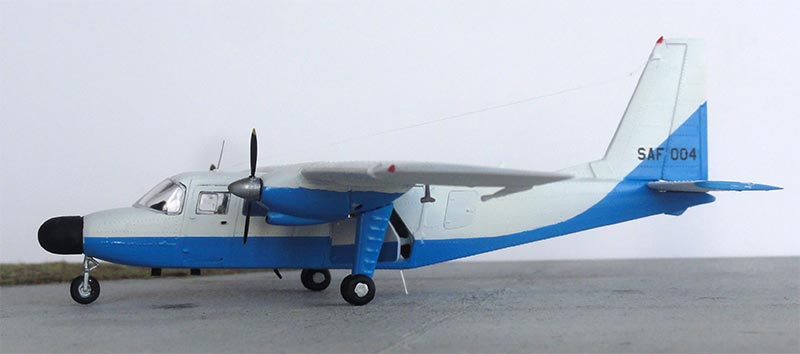

... at Zorg en Hoop airfield at Paramaribo
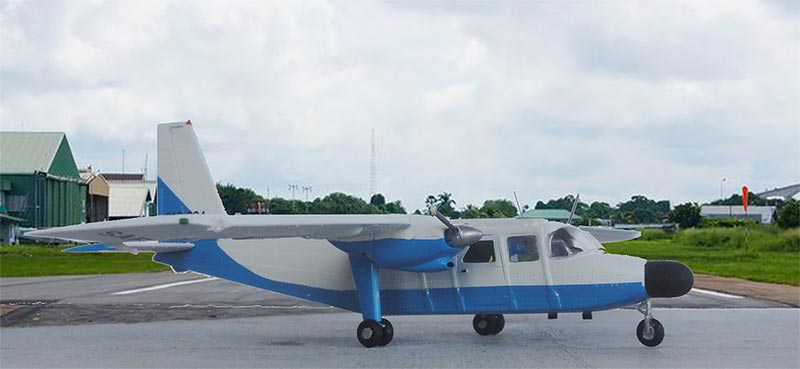
- none about Surinam usage! Read my article in the IPMS NL magazine MIP 2022-1 (in Dutch)
- Islander, "Vleugels", A. Landewers, Dutch magazine, 2024-1
- Personal information exchange with Britten Norman, 2024
WIKI Britten Norman BN-2 Islander page

(c) Copyright "designer"/ All rights reserved. Your comments are welcomed by webmaster
Created this page
March 5, 2023